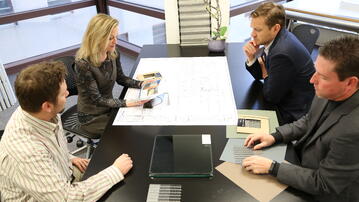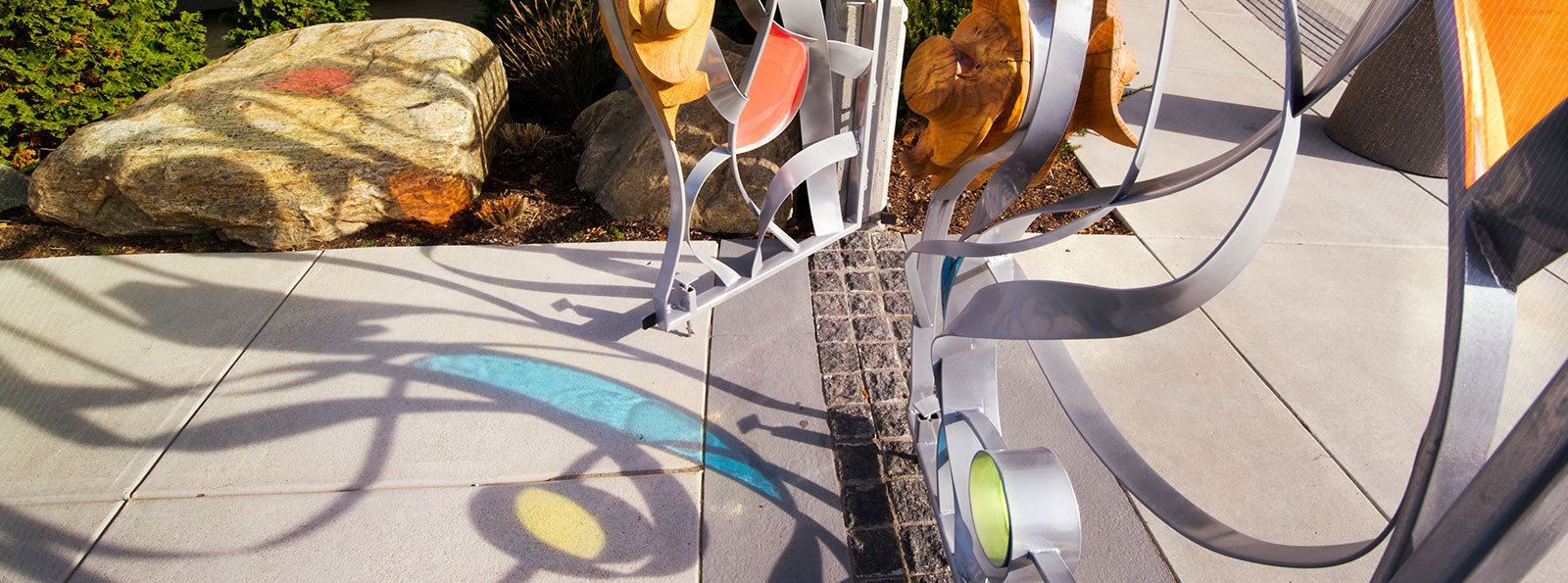Pat Malick, Array's Interior Design Practice Leader, and one of the firm's founders, co-authored this blog with Gray Garmon, a former Array employee who has become a faculty member at Southern Methodist University.
Based on my independent design work during graduate school at the University of Pennsylvania, I taught Design Thinking as a problem-solving and innovation tool to non-designers to build their own creative confidence and develop tools for designing innovative solutions in their organizations. Companies worldwide are incorporating this human-centered exploration into their business practices. It is an action-oriented process that uses empathy, ideation, prototyping and rapid testing to understand human needs, and through this exploration, design better solutions to meet those needs.
In July and again in December 2014, I was asked by the University of Pennsylvania and the Center for Social Impact Strategy to teach three days of Design Thinking workshops to the group of Social Entrepreneur Fellows. The unique program brings together 22 arts, culture and social entrepreneurs to live under one roof for eight days to improve their abilities as innovators and entrepreneurs.
 The Fellows, coming from all over the world, each have projects and organizations they started. During the workshops, I thought them how to use journey mapping, brainstorming and experience prototyping to re-invigorate the user experience of their work. By teaching non-designers these skills, they can unlock and improve their confidence to be great innovators, too.
The Fellows, coming from all over the world, each have projects and organizations they started. During the workshops, I thought them how to use journey mapping, brainstorming and experience prototyping to re-invigorate the user experience of their work. By teaching non-designers these skills, they can unlock and improve their confidence to be great innovators, too.
I often describe Design Thinking as both a problem-solving process and a communication tool. In healthcare environments, caregivers frequently recognize inefficiencies but don't necessarily have the appropriate toolkit to re-imagine an ideal process. Having competing priorities makes it difficult for service line leaders, clinicians and facility engineering & support staff to have a productive forum to effect process changes and truly design an ideal patient experience. This form of exploration offers a means to develop ideas collaboratively and communicate those ideas more effectively.
How Design Thinking can improve our work as architects
1. Design from empathy
Empathy engages human need and gives us a deeper understanding by seeing, thinking and feeling through the eyes of another.
Empathy is at the core, guiding a designer to have a more human-centered approach to creation. As architects and designers, we are trained to interpret and design for what our constituents believe they want and/or need. Our challenge is to remember that every design decision we make has an impact on a diverse group of people. In healthcare, our imperative is to design for not only patients and families with very specific needs, but more specifically for complex diagnoses, procedures and therapies. We have a unique opportunity to actively engage various users (patients, families and clinicians) during the design process. Inevitably, a team of designers creates the architecture, but if we deeply understand the needs of the people using our buildings, then we can make better design decisions and foster innovation.
Despite the incredible advancements in healthcare due to research, technology and integration, it is still an inherently human-oriented process. We all want to be comforted and reassured by another human. As architects, interior designers and planners, we understand the deep human need and desire for respect, compassion and excellence, which improve the healthcare journey.
This is an ideal time to stage a series of workshops that will give a voice to those impacted by the space. True learning happens when designers observe, interact and fully immerse to gain a deeper understanding; it is important that all voices be heard without imposing value judgments or pre-conceived notions. Designers have a tremendous opportunity to draw insight from clinicians and patients alike by facilitating a variety of ideation and prototyping exercises.
2. Design the Experience
Don’t design just the space; design the experience.

As architects, we often think that our biggest impact happens after entering the front door, but most people entering a medical campus will first engage with our buildings from the parking lot. We should ask ourselves, “Is it easy to know where to park?”, “Is the experience of walking to the entrance pleasurable and beautiful? “, and “What message are we conveying with our master plan, landscape and buildings?”
I am not saying better parking lots make better healthcare facilities, rather illustrating the importance of designing the full human experience for each person who comes to a medical campus we design. If we are not challenging our clients to reimagine the overall experience, starting with brand resonance, decision-making, scheduling, arrival, etc., we collectively miss an opportunity to both enhance the patient and caregiver journey as well as build deep loyalty and trust.
Considering the average American spends 95% of their time indoors, we should take more care to design outstanding experiences. So much of our mood and attitude can be set by the quality of the buildings in which we spend time. If we refocus our skills towards designing the experience of a healthcare facility, we go beyond the design of spaces & finishes and more deeply connect to the mindset and needs of our clients.
3. Design with Prototyping and Iteration
Make and test ideas quickly and inexpensively.
This process is action-oriented and encourages experimentation by making prototypes at the speed of thought. Downstream, sophisticated 3D visualization and laser-cut models are invaluable, but in the earliest stages of a project, rapid testing through inexpensive prototyping is the fastest way to bring a good idea into physical form.
Universally, we learn by using our hands; by using simple tools such as scissors, colored paper and foam core, we further break down the barriers between designers and stakeholders, which can lead to high-energy collaboration. Prototypes exercises should be inexpensive (both in materials and time) so that many ideas can be built and tested quickly, thus leading to tested solutions.
Long before actually building expensive millwork or creating a full-scale patient room mock up, an inexpensive, raw mock-up allows the integrated team to test a space and experiment with new ideas. Prototyping is low risk. If a wild idea is a dud, no problem, it’s only cardboard. By freeing ourselves to prototype, we greatly increase our chances to do something innovative, and improve the lives of others.
Ideation and iteration are highly collaborative processes that allow us to learn from our failures and successes alike, resulting in stronger solutions and innovative outcomes. Iteration is a fundamental part of design. Even the best ideas improve by adjusting, tweaking, comparing and sometimes turning the whole design upside down. Prototyping is intrinsically a lean iteration process that brings ideas into physical form. We can talk about a space, make drawings of it, even create photo realistic images, but no technology can replace the experience of 3D physical objects that you can see, touch and feel.
At Array, I worked with like-minded individuals who are firm believers that thoughtful design can improve the human experience. They are committed to putting Design Thinking to work.

